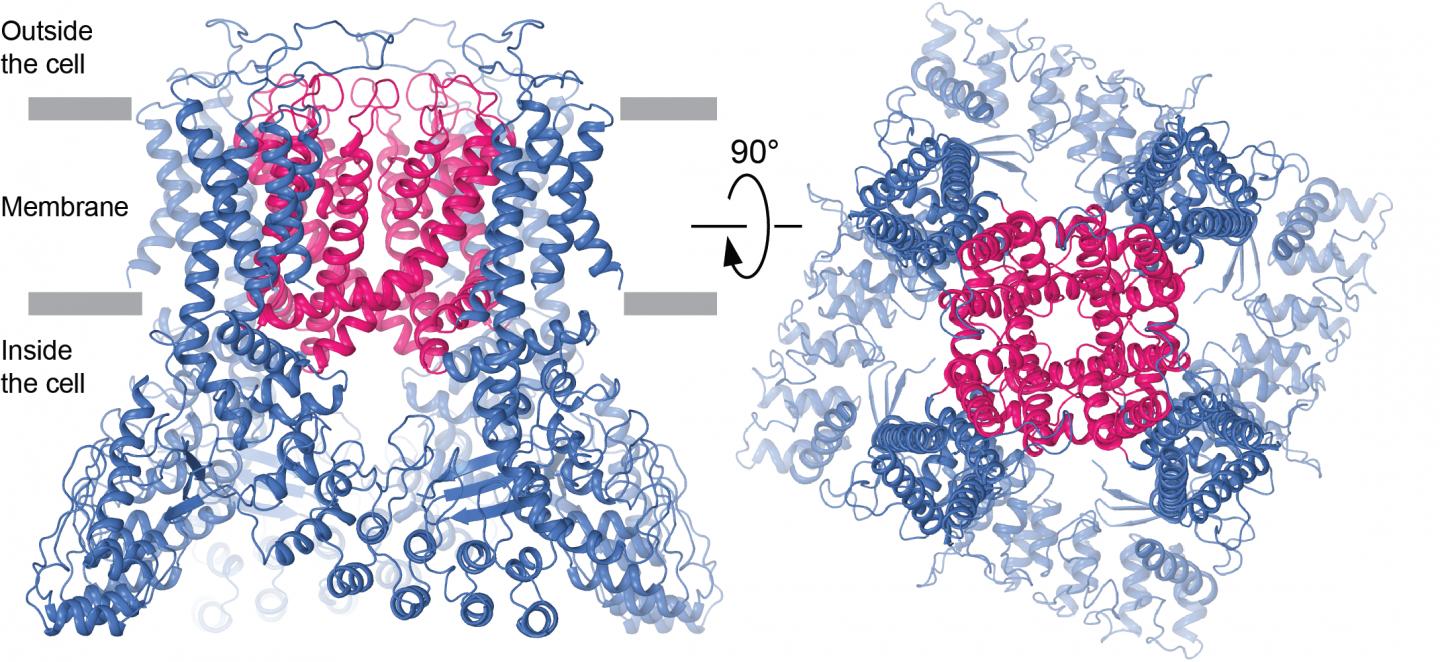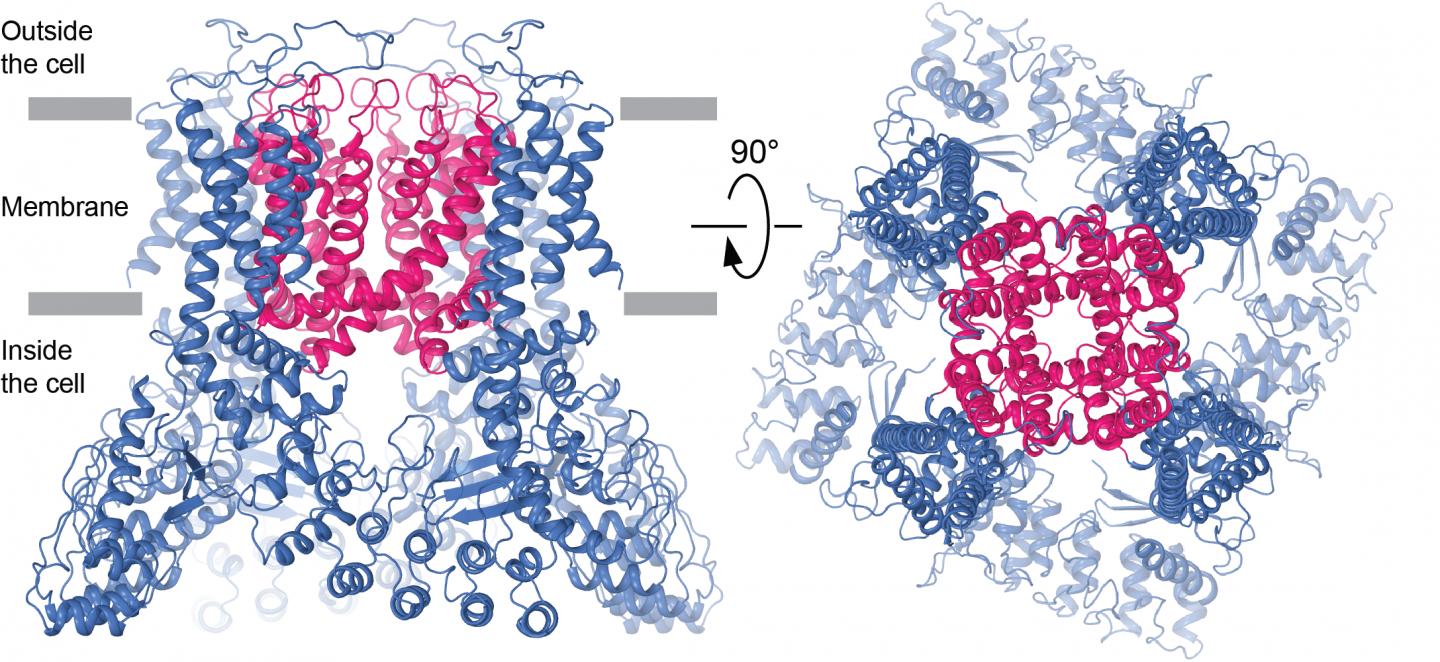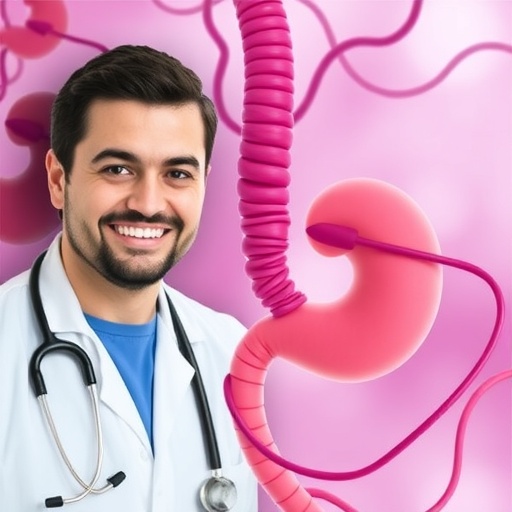
Credit: Credit: Sobolevsky lab/CUMC
New York, NY (Dec. 20, 2017) — Columbia University Medical Center (CUMC) researchers have obtained the first detailed snapshots of the structure of a membrane pore that enables epithelial cells to absorb calcium. The findings could accelerate the development of drugs to correct abnormalities in calcium uptake, which have been linked to cancers of the breast, endometrium, prostate, and colon.
The study was published today in the online edition of Nature.
Although most of the body's calcium is stored as a mineral in bones, a carefully controlled amount of this chemical element is transported into the cell, in its ionic form, where it plays a vital role in governing cellular functions. Cells regulate calcium uptake through special pores, or channels, that open and close as needed. TRPV6 is a protein channel that is located in the membranes of epithelial cells, which line the walls of the intestine, and contribute to the uptake of dietary calcium. Aberrations in TRPV6 channels may contribute to the development of cancer by disrupting the control of cell proliferation and cell death.
The researchers used advanced cryo-electron microscopy to image TRPV6. Cryo-electron microscopy–an imaging technique that combines thousands of individual images of frozen molecules into finely detailed three-dimensional representations–was pioneered by Joachim Frank, PhD, a structural biologist in the biochemistry department at CUMC, who was awarded the Nobel Prize in Chemistry in October for this work.
By comparing the channel structures, in both the open and closed states, the researchers were able to determine that the core portion of the channel–four tightly aligned helical protein segments–do a subtle twist, allowing TRPV6 to open.
"We discovered that the calcium channel opens in response to changes in the middle portion of each core helix, causing the protein segments to bend and rotate outward to create an opening just wide enough to allow a calcium ion to pass through," said study leader Alexander I. Sobolevsky, PhD, associate professor of biochemistry and molecular biophysics at CUMC. "If one were able to look straight down the channel, it would look like the opening of the iris of an eye."
The channel can switch between open and closed states extremely quickly, as needed to supply the cell with calcium.
"Our findings will help us better understand how changes in TRPV6 channels contribute to human diseases such as cancer, and provide a template for the design of drugs that correct these abnormalities," said Dr. Sobolevsky.
###
The study is titled, "Opening of the human epithelial calcium channel TRPV6." The other contributors (all at CUMC) are: Luke L. McGoldrick, Appu K. Singh, Kei Saotome, Maria V. Yelshanskaya, Edward C. Twomey, and Robert A. Grassucci.
The study was supported by grants from National Institutes of Health (T32 GM008224, F31 NS093838, R01 CA206573, R01 NS083660, and GM103310) and the Simons Foundation, NYSTAR, and by Amgen Young Investigator and Irma T. Hirschl Career Scientist awards.
The authors declare no financial or other conflicts of interest.
Columbia University Medical Center provides international leadership in basic, preclinical, and clinical research; medical and health sciences education; and patient care. The medical center trains future leaders and includes the dedicated work of many physicians, scientists, public health professionals, dentists, and nurses at the College of Physicians and Surgeons, the Mailman School of Public Health, the College of Dental Medicine, the School of Nursing, the biomedical departments of the Graduate School of Arts and Sciences, and allied research centers and institutions. Columbia University Medical Center is home to the largest medical research enterprise in New York City and State and one of the largest faculty medical practices in the Northeast. The campus that Columbia University Medical Center shares with its hospital partner, NewYork-Presbyterian, is now called the Columbia University Irving Medical Center. For more information, visit cumc.columbia.edu or columbiadoctors.org.
Media Contact
Lucky Tran
[email protected]
212-305-3689
@ColumbiaMed
http://www.cumc.columbia.edu
Original Source
http://newsroom.cumc.columbia.edu/?p=39742





